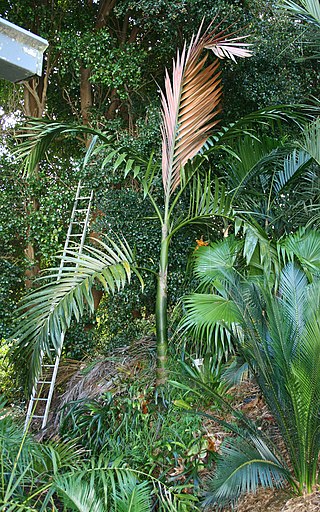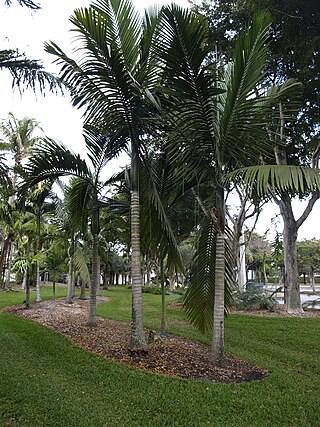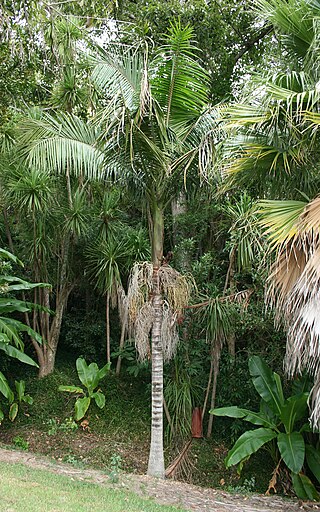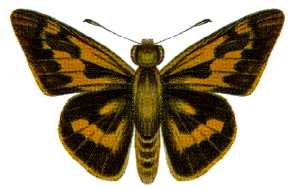
Spondias purpura is a species of flowering plant in the cashew family, Anacardiaceae, that is native to tropical regions of the Americas, from Mexico to Brazil. It is also very common in most of the Caribbean islands. It is commonly known as jocote, which derives from the Nahuatl word xocotl, meaning any kind of sour or acidic fruit. Other common names include red mombin, plum, purple mombin, hog plum, ciriguela, ceriguela, seriguela, siriguela (Brazil) cocota, ciruela huesito (Colombia), ciruela, ciruela traqueadora (Panama), ciriguela, cirigüela, cirguela, cirguelo (Ecuador), makapruim, and siniguelas (Philippines). It is a popular fruit throughout Central America, particularly in El Salvador, Nicaragua, Honduras and in Costa Rica.

Tropical Gardens of Maui was a 4-acre (1.6 ha) commercial nursery with botanical garden, located at 200 Iao Valley Road, Wailuku, Maui, Hawaii. The gardens were open daily without charge.

Echinacea purpurea, the eastern purple coneflower, purple coneflower, hedgehog coneflower, or echinacea, is a North American species of flowering plant in the family Asteraceae. It is native to parts of eastern North America and present to some extent in the wild in much of the eastern, southeastern and midwestern United States as well as in the Canadian Province of Ontario. It is most common in the Ozarks and in the Mississippi/Ohio Valley. Its habitats include dry open woods, prairies and barrens.

Archontophoenix alexandrae, commonly known as Alexandra palm, king palm, Northern Bangalow palm, or feather palm, is a palm endemic to Queensland, Australia. It was named in honour of Princess Alexandra of Denmark, but is often erroneously referred to by the misnomer Alexander palm.

Archontophoenix is a plant genus comprising six palm species that are native to New South Wales and Queensland in eastern Australia. They are tall, slender and unbranched. Relationships between Archontophoenix and the other genera of subtribe Archontophoenicinae, including the New Caledonia endemic Actinokentia, Chambeyronia and Kentiopsis are unresolved.

Actinokentia is a genus of flowering plants in the family Arecaceae, comprising two species, both indigenous to New Caledonia. Relationships between Actinokentia and the other genera of subtribe Archontophoenicinae, including the Australian Archontophoenix and the New Caledonia endemic Chambeyronia and Kentiopsis are unresolved.

Archontophoenix myolensis, the Myola palm, is a species of flowering plant in the family Arecaceae. It is endemic to Queensland, Australia. It is threatened by habitat loss. It occurs in the Myola area and the Black Mountain in the Kuranda range in the Atherton Tablelands, Queensland. The total population is seriously threatened by habitat clearance and is estimated to contain fewer than 100 mature trees and remains unprotected. Regeneration is good.

Chambeyronia is a genus of flowering plants in the family Arecaceae. It contains the following species, both endemic to New Caledonia: Relationships between Chambeyronia and the other genera of subtribe Archontophoenicinae, including the Australian Archontophoenix and the New Caledonia endemic Actinokentia and Kentiopsis are unresolved.

Kentiopsis is a genus of palm trees endemic to New Caledonia. Relationships between Kentiopsis and the other genera of subtribe Archontophoenicinae, including the Australian Archontophoenix and the New Caledonia endemic Chambeyronia and Actinokentia are unresolved.

Archontophoenix cunninghamiana is an Australian palm. It can grow over 20 m tall. Its flower colour is violet and the red fruits are attractive to birds. It flowers in midsummer and has evergreen foliage.

The Palmetum is a specialized botanical garden located in the Malakpet area, Hyderabad, in Telangana, which features only one family of plant: the palms.

Dictyosperma is a monotypic genus of flowering plant in the palm family found in the Mascarene Islands in the Indian Ocean. The sole species, Dictyosperma album, is widely cultivated in the tropics but has been farmed to near extinction in its native habitat. It is commonly called princess palm or hurricane palm, the latter owing to its ability to withstand strong winds by easily shedding leaves. It is closely related to, and resembles, palms in the genus Archontophoenix. The genus is named from two Greek words meaning "net" and "seed" and the epithet is Latin for "white", the common color of the crownshaft at the top of the trunk.

Archontophoenicinae is a botanical subtribe consisting of four genera of palms, namely Archontophoenix from Queensland and New South Wales and Actinokentia, Chambeyronia and Kentiopsis from New Caledonia. Phylogenetic relationships between the four genera are unresolved.

Archontophoenix maxima, the Walsh River palm, is the largest species of the genus Archontophoenix. It is endemic to Queensland, Australia. This robust palm grows in rainforest at altitudes between 800 and 1,200 m on the Walsh River and the adjacent Mount Haig Range in the Atherton Tablelands at approximately 17° South latitude.

Archontophoenix tuckeri, the Rocky River palm or Cape York palm, is a palm native to Australia.

Cephrenes augiades, the orange palm dart, is a butterfly of the family Hesperiidae. It is found from Indonesia to the Solomons.

Cephrenes trichopepla, the yellow palm dart, is a butterfly of the family Hesperiidae. It is found in Australia, Papua and Papua New Guinea. It has recently been recorded from Singapore and Sri Lanka.

Ptychosperma elegans, commonly known as the solitaire palm, is a very slender palm endemic to Queensland in Australia. In the nursery trade and in the United States it may be confusingly referred to as Alexander palm, which is an often-used but misnomered name of another Australian palm species Archontophoenix alexandrae, the Alexandra palm.

Pawhuskin A is a naturally occurring prenylated stilbene isolated from Dalea purpurea which acts as a competitive silent antagonist of the κ-, μ-, and δ-opioid receptors. The compound was named after Pawhuska, Oklahoma, a place near where the samples of Dalea purpurea that led to its discovery were taken from. Other isolates of the plant with affinity for opioid receptors include Pawhuskin B and Pawhuskin C, though these compounds produce comparatively weak opioid receptor displacement relative to Pawhuskin A. Dalea purpurea was used in traditional Native American medicine to treat various ailments, and pawhuskin A and related isolates may be some of the constituents of the plant which underlay this use.
John Leslie Dowe is an Australian botanist who specialises in palms.



















